Key Takeaways
1. Email marketing is the most powerful tool for building client relationships
Email is, without doubt, the most powerful marketing tool available in business today.
Unparalleled ROI. Email marketing offers the highest return on investment of any marketing channel, with studies showing a 41 to 1 return. This effectiveness stems from email's ubiquity and personal nature. Unlike social media, email is universally used in business, with people spending an average of 2.5 hours daily on work-related emails.
Personal connection. Emails land in personal inboxes alongside messages from friends and colleagues, creating a sense of intimacy. This allows for targeted, personalized communication that feels more direct and relevant than broad social media posts or website content.
Scalable follow-up. Email enables consistent, scalable follow-up with potential clients, which is crucial in nurturing leads and closing sales. It allows businesses to maintain contact with thousands of prospects simultaneously, providing valuable content and building trust over time.
2. Deep client understanding is the foundation for effective email marketing
Developing a detailed client persona and building deep understanding of your ideal clients is the critical foundation for all effective email marketing.
Create ideal client personas. Develop detailed profiles of your target clients, including their demographics, goals, challenges, and aspirations. This deep understanding allows you to craft emails that resonate with their specific needs and desires.
Customer Insight Mapping. Use a structured process to extract actionable insights about your clients:
- Basic facts and demographics
- External targets and pressures
- Internal goals and aspirations
- Personal challenges and problems
- What they need to know and feel to be ready to buy
Tailor communication. Use these insights to shape your email content, tone, and offers. Address the specific problems and goals that matter most to your ideal clients, using language and examples that will resonate with them.
3. Create a compelling opt-in offer to quickly build a valuable subscriber list
The key in my experience is to focus on the quality of visitors to your site – not just the quantity.
Opt-in Formula. To maximize subscriptions, focus on four key factors:
- Value: Perceived long-term value of your emails
- Incentive: Attractive short-term offer (e.g., free report, video)
- Friction: Minimize obstacles to signing up
- Risk: Reduce perceived risk of subscribing
Create a lead magnet. Develop a free resource that addresses an urgent problem your ideal clients face. Make it easy to consume (e.g., short report, video) and clearly communicate its value.
Optimize opt-in forms. Place opt-in forms strategically on your website, use compelling headlines, and minimize required fields. Consider using pop-ups or welcome gates to increase visibility, but balance this with user experience.
4. Craft emails that get opened, read, and acted upon
The biggest factor, in my experience, in whether a subscriber will open your email or not is nothing to do with the email itself, it's who the email is sent from.
Build sender reputation. Consistently deliver high-value content to establish trust and make your name one that subscribers eagerly open.
Craft compelling subject lines. Use the formula: Interest = Benefits + Curiosity. Highlight the value subscribers will get and pique their curiosity to encourage opens.
Subject line techniques:
- Use numbers and specific claims
- Ask intriguing questions
- Invoke emotions
- Link to unexpected topics or current events
Optimize for mobile. Ensure your emails are easily readable on mobile devices, with short paragraphs and plenty of white space.
5. Write engaging emails that build trust and encourage action
Engagement with your email subscribers is where: They believe they have a relationship with you over and above just being recipients of your emails. They trust you and they believe in the value of what you do.
Establish a clear persona. Develop a distinct character for your emails that aligns with your strengths and resonates with your ideal clients.
Write conversationally. Use a friendly, informal tone as if you're chatting with a client over coffee. Avoid corporate jargon and overly formal language.
Tell stories. Use personal anecdotes, client case studies, and analogies to illustrate your points and make your emails more engaging and memorable.
Encourage interaction. Regularly ask subscribers to take small actions, such as replying to questions, completing surveys, or sharing content. This builds a habit of engagement that can lead to bigger actions later.
6. Convert engaged subscribers into paying clients through strategic campaigns
Emailing without permission like this actually damages your relationships. It shows you don't really think or care about them. You just see them as yet another name to add to a list and maybe try to sell something to.
Address "know and feel" factors. Weave stories and examples into your emails that demonstrate your expertise, experience, and understanding of your clients' needs.
Gradual promotion. If emailing frequently, spread your sales message across multiple emails rather than cramming everything into one pitch.
Logical next steps. Position your offers as natural solutions to the problems or goals discussed in your emails.
Use campaigns. Create focused email sequences (1-4 weeks) that build towards a specific goal, such as promoting a product or securing a consultation call.
7. Use autoresponders to put your email marketing on autopilot
Autoresponders can be "storyboarded" rather like a film with each email building to achieve an overall goal.
Benefits of autoresponders:
- Ensure new subscribers receive your best content
- Tailor messages based on subscriber's stage in relationship
- Automate follow-up and nurturing
Planning autoresponder sequences:
- Define overall goal (e.g., encourage product purchase, book consultation)
- List relevant topics from customer insight map
- Audit existing resources (blog posts, videos, etc.)
- Sequence topics logically
- Create individual emails with calls-to-action
Mix autoresponders and broadcasts. Use pre-programmed sequences for core content and relationship building, supplemented with timely broadcast emails for current events and promotions.
8. Tailor your emails through list segmentation for maximum impact
List segmentation is a technique for splitting your subscribers into groups and emailing different things to each group.
Segment based on interest. Use subscriber behavior (e.g., link clicks, page visits) or explicit preferences to identify topics of interest and send more relevant content.
Adjust for engagement level. Send different sequences to highly engaged subscribers versus those who rarely open emails.
Increase response rates. Target emails based on geographic location, past purchases, or recent website activity to improve relevance and conversions.
Gather data gradually. Start with basic information (name, email) and collect additional data through surveys, resource downloads, or purchases over time.
9. Apply persuasion principles to enhance email effectiveness
By far the most effective way to persuade someone to do something is not to try to convince them that they want to do that thing. It's to understand what they already want, and then show them how they can get it by doing that something.
Cialdini's 6 Principles of Persuasion:
- Reciprocity: Offer unexpected bonuses to encourage reciprocal actions
- Social Proof: Share testimonials and success stories from similar clients
- Commitment and Consistency: Start with small commitments to encourage larger actions
- Liking: Share personal stories and be genuinely helpful
- Authority: Establish credibility through valuable content and subtle mentions of achievements
- Scarcity: Use genuine scarcity (e.g., limited time offers) when applicable
Focus on existing motivations. Understand what your clients truly want and position your offers as means to achieve those goals.
10. Measure and test your email marketing for continuous improvement
The ultimate measure of your email success is whether or not you achieve the end results you're looking for. For most people that will be sales.
Key metrics to track:
- Total sales attributable to email
- Number of subscribers
- Average sales per subscriber
- Number of buyers
- Sales per buyer
Build an email marketing dashboard. Track these metrics monthly to identify trends and areas for improvement.
Test and optimize. Regularly test different elements of your emails:
- Subject lines
- Email content and format
- Calls-to-action
- Send times and frequencies
Focus on outcomes. While open rates and click-through rates provide useful information, prioritize metrics that directly impact your business goals, such as sales or lead generation.
Last updated:
FAQ
What's "Email Persuasion" by Ian Brodie about?
- Focus on Email Marketing: "Email Persuasion" is a comprehensive guide on using email marketing to captivate and engage audiences, build authority, and generate more sales.
- Practical Strategies: The book provides practical strategies and step-by-step plans to create effective email marketing systems.
- Target Audience: It is particularly useful for consultants, coaches, and professionals looking to attract and win more clients through email marketing.
Why should I read "Email Persuasion"?
- Proven Techniques: The book offers proven techniques that have been successfully used by the author and his clients to grow their businesses.
- Comprehensive Guide: It covers everything from building an email list to writing engaging emails and converting subscribers into paying clients.
- Actionable Advice: Readers receive actionable advice that can be implemented quickly to see results in their email marketing efforts.
What are the key takeaways of "Email Persuasion"?
- Understand Your Audience: Knowing your target clients' needs and motivations is crucial for effective email marketing.
- Engagement is Key: Building a relationship with subscribers through engaging and entertaining content is essential for success.
- Consistent Action: Regularly sending valuable content and calls to action can lead to increased sales and client engagement.
How does Ian Brodie suggest building an email list in "Email Persuasion"?
- Permission-Based: Always ask for permission and offer something of value, like a free report or video, to encourage sign-ups.
- Avoid Buying Lists: Purchased lists often result in low engagement and can damage your reputation.
- Optimize Opt-In Forms: Use clear, benefit-focused language and minimize friction by making forms easy to complete.
What strategies does "Email Persuasion" recommend for writing engaging emails?
- Conversational Tone: Write as if speaking to a friend, using a personal and informal tone.
- Storytelling: Use stories and human interest elements to make emails more engaging and relatable.
- Clear Calls to Action: Always include a clear and logical call to action that aligns with the email's content.
How does "Email Persuasion" address the use of autoresponders?
- Automate Sequences: Autoresponders allow you to send pre-programmed sequences of emails, ensuring all subscribers receive your best content.
- Tailored Content: Use autoresponders to tailor content based on where subscribers are in their journey with you.
- Set and Forget: Once set up, autoresponders can run automatically, saving time and ensuring consistent communication.
What is the "Opt-in Formula" in "Email Persuasion"?
- Value and Incentive: The formula emphasizes the importance of perceived long-term value and short-term incentives to encourage sign-ups.
- Minimize Friction: Reduce obstacles that might prevent someone from signing up, such as complex forms.
- Reduce Risk: Address any perceived risks by ensuring subscribers feel safe and confident in providing their information.
How does Ian Brodie suggest using list segmentation in "Email Persuasion"?
- Targeted Messaging: Segment lists to send more relevant and personalized emails to different subscriber groups.
- Based on Behavior: Use subscriber behavior, such as past email interactions, to tailor content and offers.
- Increase Engagement: By sending the right message to the right people, you can increase engagement and reduce unsubscribes.
What are the "tools of persuasion" discussed in "Email Persuasion"?
- Reciprocity: Give unexpected bonuses to encourage subscribers to reciprocate with actions like sharing or purchasing.
- Social Proof: Use testimonials and examples to show that others like them have benefited from your products or services.
- Scarcity and Authority: Highlight genuine scarcity and establish authority to motivate subscribers to take action.
What are the best quotes from "Email Persuasion" and what do they mean?
- "You've learned it when you do it." This emphasizes the importance of taking action and implementing what you learn.
- "Email is, without doubt, the most powerful marketing tool available in business today." This highlights the effectiveness and potential of email marketing.
- "Start by entering the conversation already going on in your prospect’s mind." This suggests aligning your messaging with the existing thoughts and concerns of your audience.
How does "Email Persuasion" suggest measuring email marketing success?
- Focus on Sales: The ultimate measure of success is the sales generated through email marketing.
- Subscriber Growth: Track the growth of your subscriber list and the average sales per subscriber.
- Testing and Optimization: Use split testing to refine subject lines and calls to action for better results.
What advanced email marketing strategies are covered in "Email Persuasion"?
- Email Campaigns: Develop campaigns with a series of emails focused on a single goal, like promoting a product or service.
- Webinars and One-to-One Calls: Use emails to drive registrations for webinars or set up strategy sessions for higher-value sales.
- Continuous Improvement: Regularly review and improve your email marketing strategies based on performance metrics and feedback.
Review Summary
Email Persuasion receives mixed reviews, with an average rating of 3.77 out of 5. Readers find it particularly useful for beginners in email marketing, praising its clear structure and comprehensive content. Many appreciate its practical tips and up-to-date information. However, experienced marketers may find it too basic. Some readers highlight its value for small businesses and consultants, while others note its lack of extraordinary insights. The book is generally considered a solid introduction to email marketing, with actionable advice and an easy-to-read style.
Similar Books
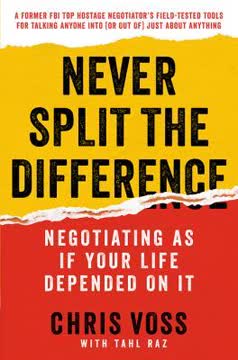
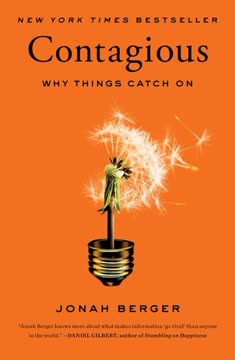
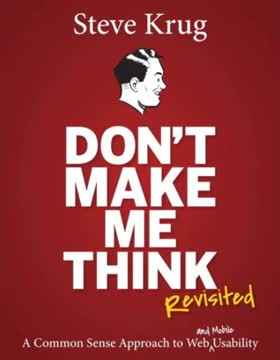




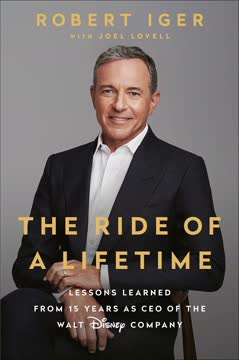

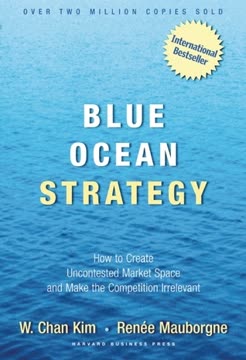
Download PDF
Download EPUB
.epub digital book format is ideal for reading ebooks on phones, tablets, and e-readers.




